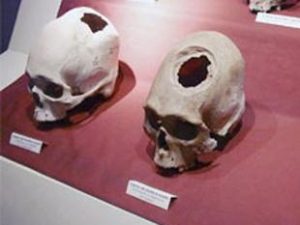- Home
- Editorial
- News
- Practice Guidelines
- Anesthesiology Guidelines
- Cancer Guidelines
- Cardiac Sciences Guidelines
- Critical Care Guidelines
- Dentistry Guidelines
- Dermatology Guidelines
- Diabetes and Endo Guidelines
- Diagnostics Guidelines
- ENT Guidelines
- Featured Practice Guidelines
- Gastroenterology Guidelines
- Geriatrics Guidelines
- Medicine Guidelines
- Nephrology Guidelines
- Neurosciences Guidelines
- Obs and Gynae Guidelines
- Ophthalmology Guidelines
- Orthopaedics Guidelines
- Paediatrics Guidelines
- Psychiatry Guidelines
- Pulmonology Guidelines
- Radiology Guidelines
- Surgery Guidelines
- Urology Guidelines
Future: New Robot Drill can perform 2 hour neurosurgery in 2.5 mintues

The automated drill, similar to those used in machine auto parts, produces fast, clean and safe cuts, reducing the time the wound is open and the patient is anaesthetised.
This can decrease the incidence of infection, human error, and surgical cost, according to the findings published in the journal Neurosurgical Focus.
To perform complex surgeries, especially cranial surgeries, surgeons typically use hand drills to make intricate openings, adding hours to a procedure.
The automated drill reduces the time for bone removal from two hours using a hand drill to 2.5 minutes.
“It was like doing archaeology. We had to slowly take away the bone to avoid sensitive structures,” said William Couldwell, a neurosurgeon at University of Utah in the US.
“I was interested in developing a low-cost drill that could do a lot of the grunt work to reduce surgeon fatigue,” said A K Balaji, associate professor at University of Utah.
First, the patient is imaged using a CT scan to gather bone data and identify the exact location of sensitive structures, such as nerves and major veins and arteries that must be avoided.
Surgeons use this information to programme the cutting path of the drill.
“The software lets the surgeon choose the optimum path from point A to point B, like Google Maps,” said Balaji.
In addition, the surgeon can programme safety barriers along the cutting path within one millimetre (mm) of sensitive structures.
The drill does the heavy lifting by removing most of the bone, similar to a mill, accurately and rapidly.
The translabyrinthine surgery is performed thousands of times a year to expose slow-growing, benign tumours that form around the auditory nerves, researchers said.
This cut is not only difficult, the cutting path also must avoid several sensitive features, including facial nerves and the venous sinus, a large vein that drains blood from the brain. Risks of this surgery include loss of facial movement.
The device also has an automatic emergency shut-off switch. During surgery, the facial nerve is monitored for any signs of irritation.
“If the drill gets too close to the facial nerve and irritation is monitored, the drill automatically turns off,” Couldwell said.

Disclaimer: This site is primarily intended for healthcare professionals. Any content/information on this website does not replace the advice of medical and/or health professionals and should not be construed as medical/diagnostic advice/endorsement or prescription. Use of this site is subject to our terms of use, privacy policy, advertisement policy. © 2020 Minerva Medical Treatment Pvt Ltd